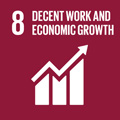- Docente: Riccardo Rovelli
- Credits: 8
- SSD: SECS-P/01
- Language: English
- Moduli: Riccardo Rovelli (Modulo 1) (Modulo 2)
- Teaching Mode: In-person learning (entirely or partially) (Modulo 1); In-person learning (entirely or partially) (Modulo 2)
- Campus: Forli
-
Corso:
Second cycle degree programme (LM) in
International Politics and Economics (cod. 6763)
Also valid for Second cycle degree programme (LM) in International Politics and Economics (cod. 5702)
Second cycle degree programme (LM) in International relations and diplomatic affairs (cod. 6058)
Second cycle degree programme (LM) in International relations and diplomatic affairs (cod. 6750)
Learning outcomes
The course is an introduction to the ECONOMICS and POLITICAL ECONOMY of the European Union. Special importance is given to the economic, political and institutional prerequisites of EU integration and enlargement – and to the consequences that integration and enlargement have on member states. Hence, students will become familiar with concepts and models of economics and political economy that are especially useful for understanding and evaluating these processes and the policies that accompany them. One third of the course is dedicated to the institutional and policies innovations adopted since 2008, during the Great Recession.
Course contents
“Europe will be forged in crises, and will be the sum of the solutions adopted for those crises”(J. Monnet). Since 2009—and again in 2020 and 2022—the EU has faced a series of crises that, in turn, opened up opportunities for adaptation and deeper integration, leading to the creation of new institutions and the adoption of new policies. But will this pattern persist? Can it?
Europe’s model of economic integration has rested on two key assumptions: first, that only minimal political integration was required, with deeper integration deferred or perhaps never needed; and second, that within the prevailing liberal international order, the EU could establish itself as a recognized 'normative power' by promoting values such as free trade, a well-regulated and inclusive economy, democracy, human rights, and the rule of law.
These assumptions no longer hold. And, in its attempt to re-direct its course in a highly conflictual world, the EU is beginning to pay the price of its increasing internal heterogeneity. Divided among 27 national governments, the EU often seems unable to advance a truly European interest and remains hostage to conflicting national and electoral agendas — which, in turn, are too focused on the short term.
In this course, we will assess the process of European economic integration since the 1950s and evaluate the EU's current economic governance and adopted policies in the light of these considerations.
Lectures will cover 17 topics:
Topic 1 - An overview
What is the EU? Why is it this way? Who has the power to do what? And what has the EU achieved so fat?
Topic 2 - The Internal Market
Are there barriers to integration within the IM? Do these barriers help to explain Europe's persistently lagging productivity?
What can be done to remove these obstacles, also in the light of the Letta and Draghi reports? And what stands in the way of removing these obstacles?
Topics 3-7 - Complements to the IM
- Should national tax systems be better harmonized?
- Should the EU have its own taxes?
- Is the EU Budget well structured?
- What do the EU regional and structural policies do?
- What are the new geopolitics of trade, and how will they condition the EU's economic growth?
Topic 8 - EMU: The design
- Why a monetary union? Why an incomplete union?
- Who should enter into the EMU?
Topic 9 - MP in Practice
- How does the ECB work? What are its goals andtools? How have they been changing over time?
Topic 10 - Fiscal Policy in the EMU
- How does FP work (multipliers, stabilizers, deficits and debts)?
- What is the EU's framework for Economic Governance?
Topics 11-17 - Crises, Reforms and new Challenges
- How do structural divergencies emerge within a MU?
- How did the Financial Crisis, the Great Recession and the Sovereign Debt Crisis affect Europe?
- A wave of changes: Reforms that followed the crises
- New challenges, new policies: Covid-19 and NGEU.
- Debates on Common European goods: The Green Deal and the new Industrial Plan.
- The challenges of a more openly conflictual international order.
Readings/Bibliography
Lecture notes, required readings and documents will all be available through "Virtuale".
Teaching methods
The course will be taught in the second semester, in the Campus of Forlì.
It will be taught by Professors Riccardo Rovelli and Jacopo Bonchi.
Prof. Bonchi will teach topics 8, 9, 10.
Prof. Rovelli will teach the other topics.
- All lectures will be delivered in presence and will be supported by PC-based presentations.
- Students must download and read these presentations (and possibly the related readings) before lectures.
- Students are encouraged to take an active part in class discussions and are expected to interact with the teacher (and with each other) during classes.
- Students will be taught and encouraged to search for and obtain relevant information (data; official documents; academic literature; policy analyses) through the Internet, and to evaluate and discuss them critically.
Assessment methods
All students, except for outgoing Erasmus students, are required to attend at least 70% of classes.
All students are required to pass a Fitness Test (no marks, see below). The purpose of this test is to verify their ability to search and download data from appropriate Internet sources and to produce simple data presentations.
There are two ways to take the exam:
Mode A) Full participation: Students take two written tests and will deliver an essay on a chosen topic.
Mode B) Long test: Students will take a single, longer written test, with no essay, in a regular exam session.
Students may switch at any time from Mode A to Mode B (not viceversa).
The structure of the exams is described below in more detail.
***
FT: The Fitness Test ("Idoneità")
All students must pass a fitness test (FT), under the guidance of the instructor.
The test (which does not contribute to the final mark) requires to:
a) identify a EU economic topic with a relevant quantitative dimension;
b) download relevant data from a reputable source (Eurostat, ECB, OECD, IMF, National Statistical Services or Central Bank, etc...);
c) perform simple operations on those data in an Excel file;
d) prepare a "user friendly" table and graph to summarize the main characteristics of the data examined;
e) write a short comment (250 words) describing the main stylized facts that can be observed by the data;
f) assemble the comment, the main graph or table(s) and the source data in a .pdf file.
The .pdf file of the FT must be sent to the instructor before taking any intermediate or final exam.
***
A) Exams for Mode A students (Full participation):
For Mode A students, the final mark is equal to the sum of the points obtained from three evaluations:- Intermediate written test (on topics 1 to 7 - max 11 points)
- Final written test (on topics 8 to 17 - max 11 points)
- Essay (max 11 points).
If points are equal to 31 or more, the final mark is 30 cum laude.
Intermediate and Final written tests:
- Answers (max. 250 words) to 3 open questions (out of 5).
- Exams take place at Labic; exam questions will be delivered through EOL.
- One exam may be missed exclusively for grave reasons (to be authorized explicitly), in which case it will have to be taken within the summer session.
Essay: no more than 5000 words long (= max 10 pages with font calibri 12, single spaced)
- The topic should be discussed with and approved by Prof. Rovelli.
- The essay must address a single, well identified and relevant economic policy issue.
- It must be written in (reasonably good) English.
- It must be delivered by e-mail as a .pdf file at least 7 days before the last “appello d’esami” in the summer session.
***
B) Exams for Mode B students (Long test):
Mode B students (and also Erasmus outgoing students) must take a single written exam, identified on EOL as "Economics of the EU - TOTAL Exam (for students that have not taken the Intermediate Test)", during one regular exam session.
- The exam will require answers (max 250 words) to 6 (out of 8) open questions. Each question is valued up to 5,5 pts.
- Topics and readings are the same as for attending students.
- No essay required.
***
For all students, a positive grade (greater than or equal to 18/30) may be refused only once.
A new exam must then be taken in the next exam session, as a "Mode B" student.Teaching tools
Detailed lecture notes cover all topics included in the course.
They are available in Virtuale (some files may become available later on, during term)
They provide the basis for the lectures delivered in class, and for the ensuing discussions.
Students must download and read these presentations (and possibly the related readings) before lectures.
Office hours
See the website of Riccardo Rovelli
See the website of
SDGs




This teaching activity contributes to the achievement of the Sustainable Development Goals of the UN 2030 Agenda.
